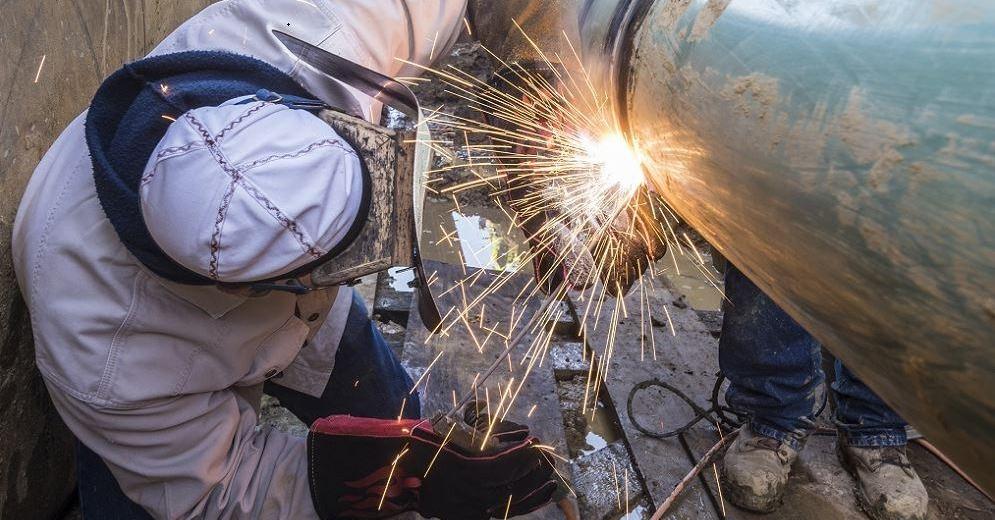Are you curious to know what is stick welding? You have come to the right place as I am going to tell you everything about stick welding in a very simple explanation. Without further discussion let’s begin to know what is stick welding?
Welding is a fundamental process that has shaped various industries, from construction and manufacturing to art and sculpture. Among the numerous welding techniques, stick welding, also known as shielded metal arc welding (SMAW), holds a special place. In this blog, we’ll explore what stick welding is, how it works, its applications, and why it continues to be a vital method in the world of metalwork.
What Is Stick Welding?
Stick welding is a manual arc welding process that joins metals using an electrode (or “stick”) covered in a flux coating. This flux coating plays multiple roles: it stabilizes the arc, shields the weld pool from atmospheric contamination, and provides a layer of slag that can be easily chipped away after the welding process. Stick welding is a versatile and widely used method for both industrial and personal projects.
The Process Of Stick Welding
The stick welding process involves several key steps:
- Preparation: Before beginning, the welding area must be clean and free of any contaminants, as these can affect the quality of the weld. The metals to be joined should also be properly prepared, often through beveling or other methods to create a groove for the weld.
- Choosing Electrodes: Selecting the appropriate electrode is essential. Different electrodes are designed for various metals, thicknesses, and welding conditions.
- Setting the Welding Machine: The welding machine’s settings, such as amperage and polarity, must be adjusted based on the electrode and the materials being welded.
- Creating an Arc: The welder strikes an arc between the electrode and the workpiece. This arc generates intense heat, causing the electrode to melt and deposit filler metal into the joint, creating the weld bead.
- Maintaining the Arc: The welder must carefully control the arc length, speed, and angle to achieve the desired weld penetration and quality.
- Slag Removal: After each pass, a layer of slag forms on the surface of the weld bead. This slag needs to be removed using a slag hammer or chipping hammer.
Applications Of Stick Welding
Stick welding is a versatile technique widely used in various industries and applications:
- Construction: It is used for welding structural steel in buildings, bridges, and infrastructure projects.
- Pipeline Welding: Stick welding is favored for pipeline construction and repair due to its portability and effectiveness in challenging field conditions.
- Maintenance and Repairs: It is a valuable method for equipment repair and maintenance in industries like agriculture, manufacturing, and automotive.
- Art and Sculpture: Stick welding is embraced by artists and sculptors for creating intricate metal sculptures and decorative pieces.
- Shipbuilding: It is a common choice in shipbuilding for welding steel components and structures.
In case you want to know more interesting topics by visiting Yescancel.
Why Stick Welding Matters?
- Versatility: Stick welding can be performed in various positions (vertical, horizontal, overhead) and can weld a wide range of metals, making it highly adaptable.
- Portability: Stick welding equipment is portable and doesn’t require a shielding gas, making it suitable for remote or outdoor welding tasks.
- Affordability: Stick welding is cost-effective, with relatively low equipment and consumable costs compared to some other welding methods.
- Skill Development: Stick welding requires a high level of skill and technique, making it a preferred method for welders looking to hone their craft.
Conclusion
Stick welding, with its deep roots in the world of metalwork, continues to hold a prominent place in the welding industry. Its versatility, portability, and cost-effectiveness, along with its ability to produce strong and durable welds, ensure that stick welding remains a valuable skill in the hands of welders and a pivotal process in a variety of applications. Whether you’re building a bridge, repairing a piece of equipment, or creating a work of art, stick welding is an art and science that continues to shape the world around us.
FAQ
What Is The Meaning Of Stick Welding?
Manual metal arc welding (MMA or MMAW), also known as shielded metal arc welding (SMAW), flux shielded arc welding or stick welding, is a process where the arc is struck between an electrode flux coated metal rod and the work piece. Both the rod and the surface of the work piece melt to create a weld.
Are Tig And Stick Welding The Same?
The stick welding uses a similar power source to TIG, which is why most TIG welders can stick weld as well. However, this process is nothing like TIG. It’s dirtier, but faster and much cheaper to run, making it one of the most popular welding methods for hobbyists and professionals alike.
What’s Better Mig Or Stick Welding?
Both MIG and Stick welding systems can produce high-quality welds, but the type of metal makes a big difference in which machine works better. For thinner metals, MIG welding is the better choice for creating a clean, strong joint. On thicker metals — over ⅜ inch — the Stick has better performance.
What Is Stick Vs Flux Welding?
The primary difference between stick welding and flux-core welding is right there in the name; it’s all about the composition of the electrode. With stick welding, you have a metal electrode coated in flux. With flux-core welding, you have an electrode made out of flux coated in metal.
I Have Covered All The Following Queries And Topics In The Above Article
What Is Stick Welding Called
What Is Stick Welding Used For
What Polarity Is Stick Welding
What Is Stick Welding Good For
What Is Stick Welding Process
What Is Stick Welding Machine
What Is Stick Welding Called
Advantages Of Stick Welding
Smaw Welding
Pros And Cons Of Stick Welding
History Of Stick Welding
Stick Welding Facts
What Is Stick Welding
What is the meaning of stick welding
